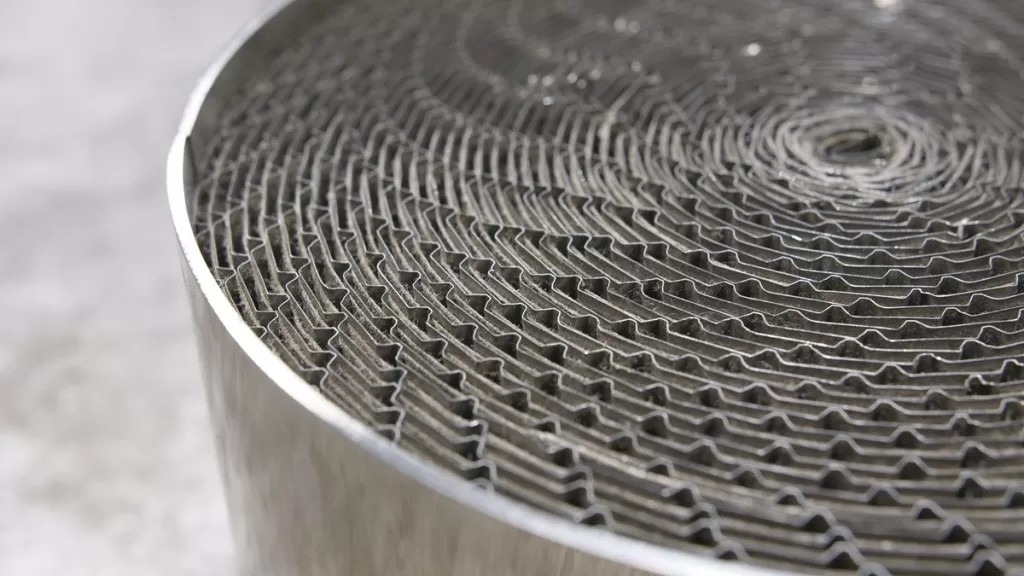The SCR (Selective Catalytic Reduction) system is a crucial component in modern Cummins diesel engines, designed to minimize harmful emissions and meet stringent environmental regulations. This guide delves into the intricacies of Scr Cummins systems, exploring their functionality, maintenance, and troubleshooting.
Understanding how SCR systems work in Cummins engines is essential for maximizing performance and longevity. These systems play a vital role in reducing NOx emissions, a significant contributor to air pollution.
How SCR Cummins Systems Work
SCR technology utilizes a catalytic converter and Diesel Exhaust Fluid (DEF), also known as AdBlue, to convert harmful nitrogen oxides (NOx) into harmless nitrogen and water vapor. Here’s a breakdown of the process:
-
Exhaust Gases Enter the SCR Catalyst: Exhaust gases from the engine, containing NOx, enter the SCR catalyst.
-
DEF Injection: DEF is injected into the exhaust stream upstream of the SCR catalyst. The heat from the exhaust converts the DEF into ammonia (NH3).
-
Chemical Reaction: Inside the SCR catalyst, the ammonia reacts with the NOx, converting it into nitrogen (N2) and water (H2O). These harmless byproducts are then released through the exhaust pipe.
Importance of Maintaining SCR Cummins Systems
Proper maintenance is crucial for ensuring the optimal performance and longevity of your SCR Cummins system. Neglecting maintenance can lead to costly repairs and downtime. Key maintenance tasks include:
- Regular DEF Replenishment: Ensure the DEF tank is filled with high-quality DEF to avoid system malfunctions. Low DEF levels can trigger derates, limiting engine power.
- SCR Catalyst Inspection: Periodically inspect the SCR catalyst for signs of damage or blockage. A malfunctioning catalyst can significantly reduce emissions control efficiency.
- Sensor and Doser Maintenance: Ensure sensors and dosers are functioning correctly to maintain accurate DEF injection and efficient NOx reduction.
Troubleshooting Common SCR Cummins Issues
Several issues can arise with SCR Cummins systems. Common problems include:
- DEF Quality Issues: Using contaminated or low-quality DEF can damage the system.
- Sensor Malfunctions: Faulty sensors can lead to inaccurate readings and improper DEF injection.
- SCR Catalyst Blockage: Ash buildup or other contaminants can block the SCR catalyst, hindering its performance. Roadwarrior’s Metalcor catalyst technology helps maximize passive regeneration, reducing the risk of blockage.
Addressing these issues promptly can prevent further damage and costly repairs. Utilizing diagnostic tools, such as the Roadwarrior Diesel Decoder, can help identify and troubleshoot SCR problems efficiently. These tools can read DTCs (Diagnostic Trouble Codes), providing insights into the underlying issue. They also offer access to repair information and allow for tasks like resetting the DPF ash accumulator. Furthermore, tools that provide comprehensive vehicle data, including trip distance and engine hours, are essential for proactive maintenance planning. Understanding driver productivity and trip reports can further optimize performance and fuel efficiency.
Conclusion
SCR Cummins systems are essential for reducing harmful emissions and ensuring compliance with environmental regulations. Understanding their functionality, maintenance requirements, and troubleshooting techniques is crucial for maximizing engine performance and longevity. By prioritizing proper maintenance and utilizing effective diagnostic tools, you can keep your SCR Cummins system operating efficiently, minimizing downtime and maximizing the life of your engine.

